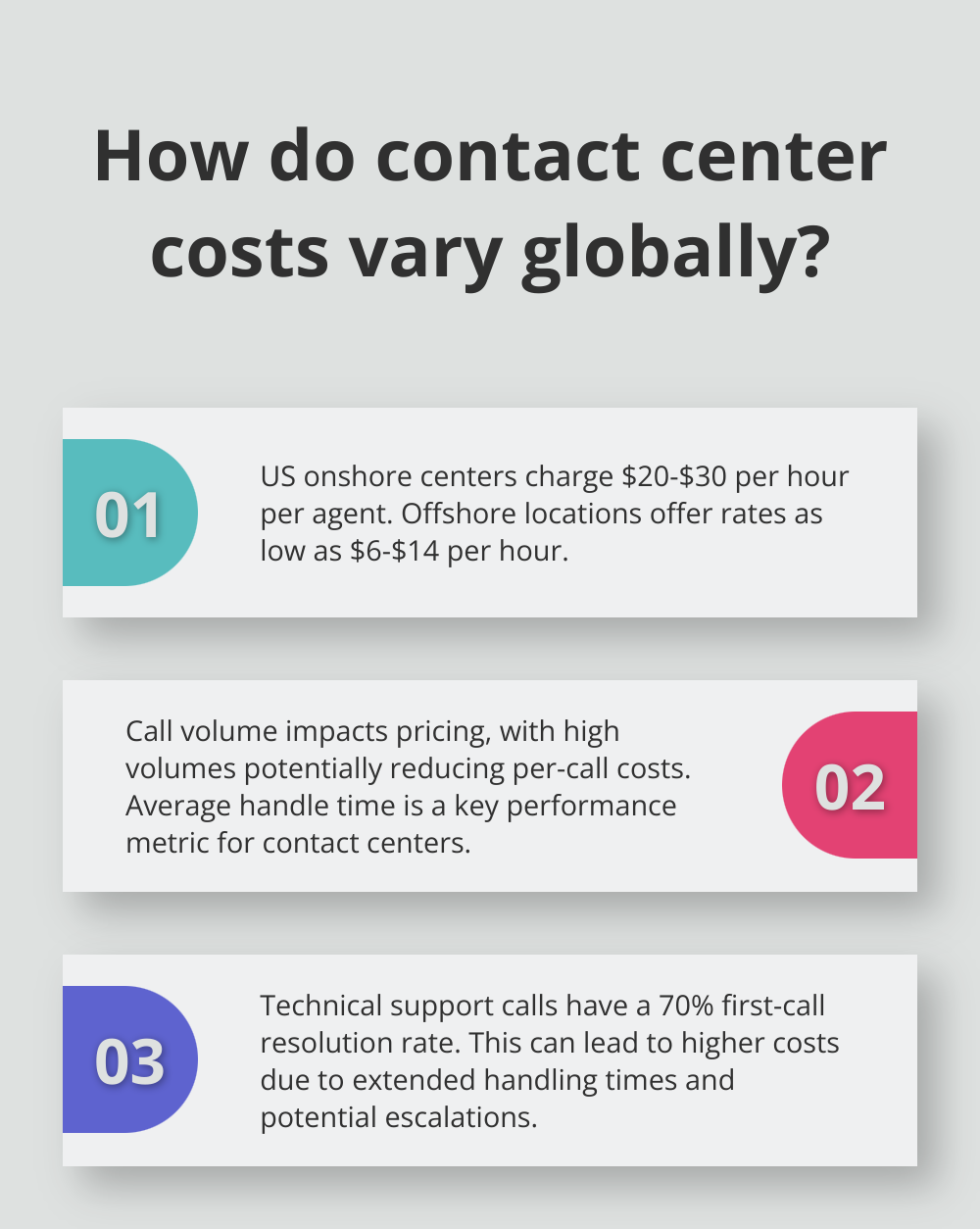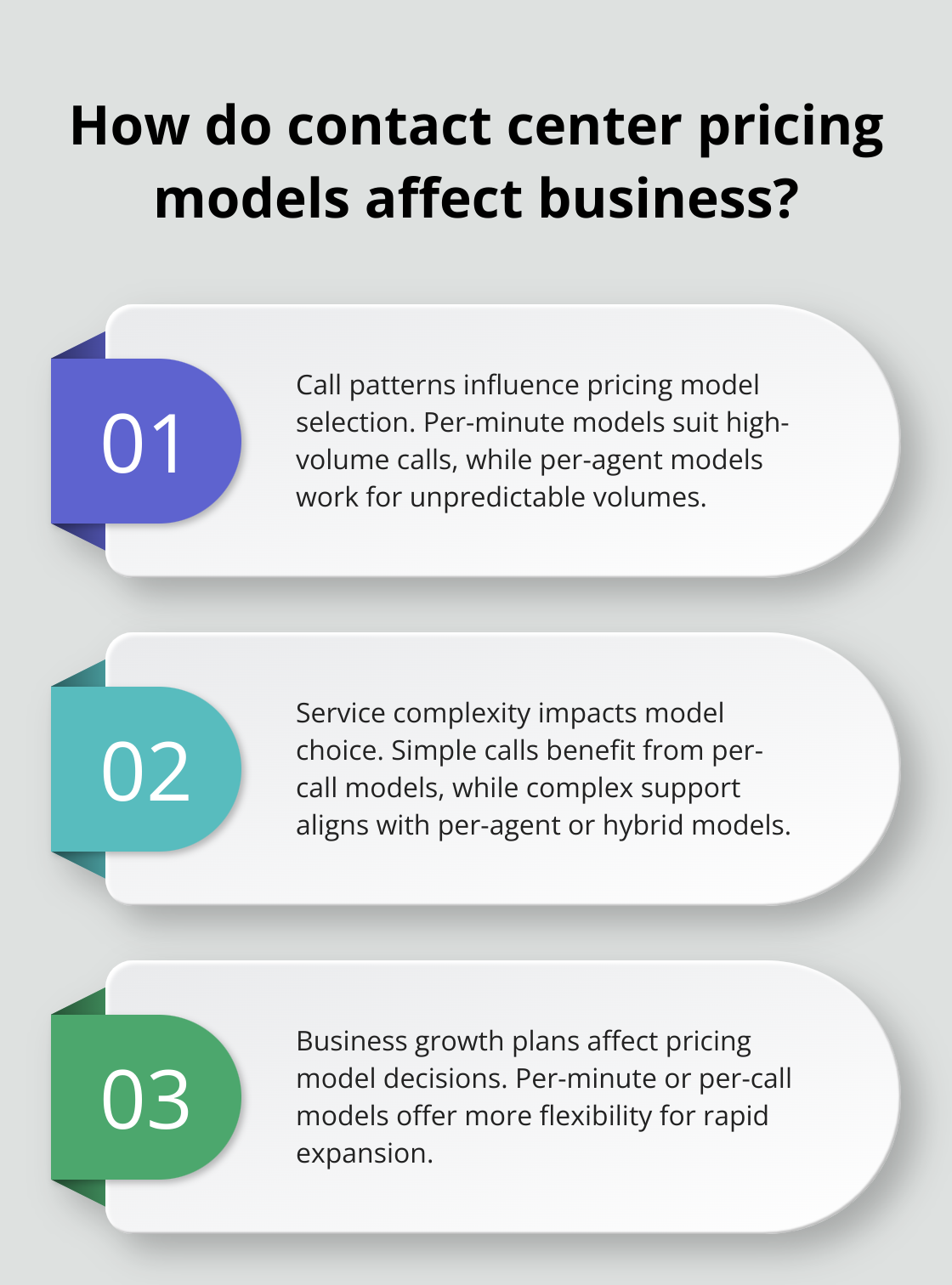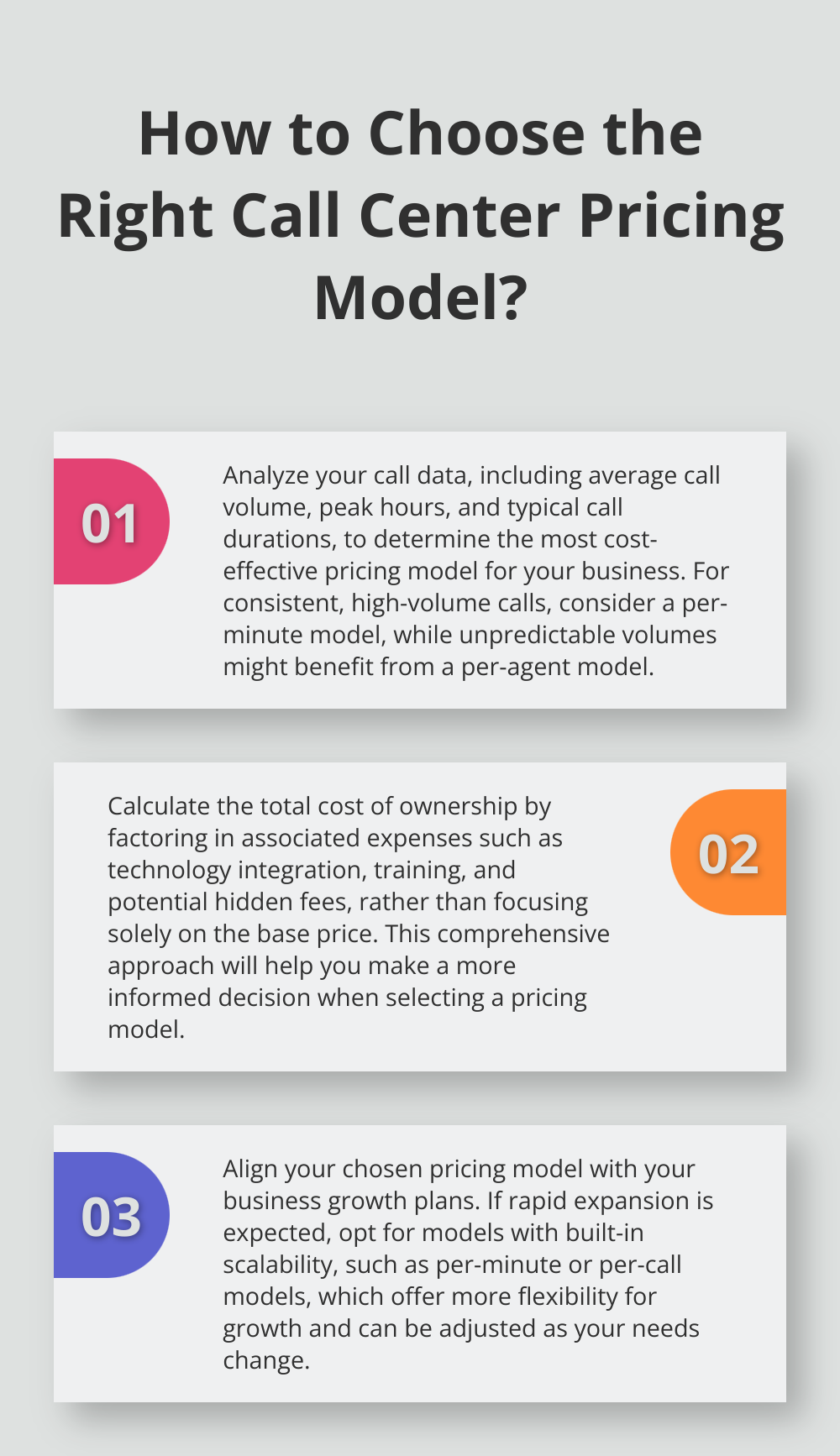Contact center pricing can be complex, making it difficult for businesses to choose the right model. At Outsource Consultants, we often see companies struggle with selecting a pricing structure that balances cost efficiency with service quality. The right model can optimize expenses and enhance customer satisfaction, while the wrong choice can lead to inefficiencies and poor service.
Contact Center Pricing Models
1. Per-Minute Pricing
How It Works: Businesses are charged based on the exact duration of calls. This model suits companies with fluctuating call volumes or frequent, short interactions.
Pros:
- Pay only for actual usage.
- Ideal for unpredictable call traffic.
Cons:
- May lead to rushed customer interactions.
- Costs can be unpredictable during peak periods.
2. Per-Call Pricing
How It Works: A fixed rate is charged per call, regardless of duration. Best for organizations with consistent call lengths and predictable volumes.
Pros:
- Simple and predictable cost structure.
- Encourages efficiency in call handling.
Cons:
- Less suitable for complex, long-duration interactions.
- May lead to rushed or incomplete resolutions.
3. Per-Agent Pricing
How It Works: Businesses pay a fixed monthly or annual fee per agent. This model is ideal for companies prioritizing quality service over call volume.
Pros:
- Predictable costs.
- Encourages better customer service.
Cons:
- Inefficient if call volumes fluctuate.
- Agents may not be incentivized to handle high call volumes.
4. Hybrid Pricing Models
How It Works: Combines elements of multiple pricing models. For example, a base per-agent fee plus a per-minute rate.
Pros:
- Customizable based on business needs.
- Balances flexibility with cost control.
Cons:
- Can be complex to manage.
- Requires careful monitoring to optimize costs.
Key Factors Influencing Contact Center Pricing
1. Call Volume and Duration
High call volumes often lead to lower per-call costs. However, longer calls increase expenses in per-minute models. Businesses should monitor Average Handle Time (AHT) to evaluate performance and forecast costs.
2. Service Complexity
Handling simple inquiries is cheaper than managing complex support issues. For example, technical support calls average a 70% first-call resolution rate, requiring longer interactions and potentially higher costs.
3. Technology and Infrastructure
- Cloud-based solutions have lower upfront costs but ongoing subscriptions.
- AI-powered tools like chatbots can reduce human workload but require initial investment and maintenance. Explore AI-powered solutions.
4. Location and Labor Costs
Pricing varies based on the location of the contact center:
- Onshore (U.S.): $20-$30 per hour per agent
- Offshore (Philippines, India): $6-$14 per hour
- Nearshore (Mexico, Costa Rica): Balanced between cost savings and cultural alignment
For cost-effective solutions, businesses can explore outsourcing to the Philippines or nearshore contact centers.

5. Quality and Customer Satisfaction
Investing in high-quality service improves customer retention and brand loyalty. Advanced technology and experienced agents may cost more but deliver long-term value.

Choosing the Best Contact Center Pricing Model
1. Analyze Your Call Patterns
Assess call data, including volume, peak times, and durations:
- High, consistent call volumes → Per-minute pricing
- Unpredictable volumes → Per-agent pricing
2. Evaluate Service Complexity
- Simple, routine calls → Per-call model
- Complex interactions → Per-agent or hybrid pricing
3. Align with Growth Trajectory
If scaling, opt for flexible models like per-minute or per-call pricing that accommodate growth.
4. Calculate Total Cost of Ownership
Factor in technology integration, training, and hidden fees beyond base pricing.
5. Prioritize Quality Metrics
Select a model that supports high-quality customer service, reducing churn and protecting brand reputation.

Final Thoughts
Choosing the right contact center pricing model requires balancing cost, efficiency, and service quality. Companies should evaluate their call volume, service complexity, technology needs, and location to determine the most cost-effective solution.
Outsource Consultants specializes in helping businesses find the best BPO solutions to maximize value while maintaining exceptional customer service.
FAQs
What is the most cost-effective contact center pricing model?
The best model depends on your call volume and complexity. Per-minute pricing suits high-volume calls, while per-agent models work well for complex interactions.
How do offshore call centers compare in cost?
Offshore centers can cost as low as $6 per hour per agent, whereas onshore U.S. centers range from $20-$30 per hour. Learn more about offshore outsourcing.
Are hybrid pricing models better for growing businesses?
Yes, hybrid models provide flexibility, allowing businesses to scale efficiently while controlling costs.
How does AI impact contact center pricing?
AI-powered tools like chatbots can reduce costs by handling routine inquiries, but they require an initial investment and ongoing maintenance.
What factors should I consider beyond cost?
Service quality, customer satisfaction, and long-term ROI are critical considerations when selecting a pricing model.
For expert guidance, contact Outsource Consultants today!






